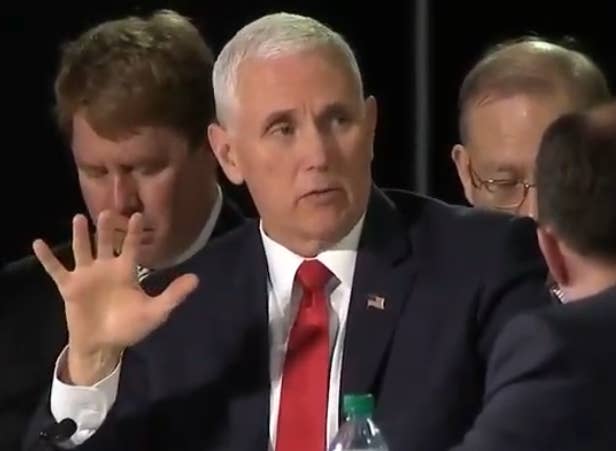
Vice President Mike Pence on Tuesday called for NASA to land astronauts on the moon by or before 2024.
Experts called the moonshot idea, which accelerates NASA’s tentative 2028 plans to land astronauts on the moon by three years, ambitious and hugely expensive.
“It is our policy to return American astronauts to the moon,” said Pence in a speech in Huntsville, Alabama, ahead of a meeting of the National Space Council. Pence suggested astronauts should land at the moon’s south pole, where some ice is believed to lie hidden in shadowed craters. Pence told NASA to “fail smarter” in developing the lunar landing.
“It’s definitely a laudable goal, but also very ambitious,” space policy expert Brian Weeden of the Secure World Foundation told BuzzFeed News by email. “I think it might be possible but only with a serious change to the existing plan and Congressional support, including funding.”
NASA has not even been able to launch astronauts into low Earth orbit since the 2011 retirement of the space shuttle program. A private rocket company, SpaceX, is scheduled to return astronauts to the International Space Station later this year.
NASA, a $21 billion agency, now spends about $3.5 billion a year on the jumbo Space Launch System (SLS) rocket and the Orion capsule for delivering astronauts beyond low Earth orbit. The administration had sought to accelerate those efforts in its most recent budget proposal to Congress, partly by cutting $600 million from space science budgets.
“While the Trump Administration is talking big goals for NASA’s human spaceflight program, they’re not being matched [with] increases in budget. And Congress has so far prioritized jobs in certain districts over speed and efficiency,” Weeden said. “I think a big part of the risk is that the push to go faster might lead to short-term success that’s not sustainable.”
The SLS has been repeatedly delayed, and Pence said that if commercial rockets from space firms such as SpaceX or Blue Origin replaced it for moon missions, that was acceptable. That represented a break with past policy for NASA that caught the attention of Elon Musk.
@NASA @VP It would be so inspiring for humanity to see humanity return to the moon!
“Our agency is going to do everything in its power to meet that vision, to meet that deadline,” NASA chief Jim Bridenstine said at the meeting. Bridenstine said the agency was pushing hard to launch the first SLS by 2020.
At the height of the space race during the 1960s, NASA consumed 4.4% of the federal budget, instead of its current 0.5% slice. A similar increase for NASA today would shoot its budget above $100 billion a year. A Congressional Budget Office analysis of similar moon landing plans made by the Bush administration in 2004 estimated the cost at an extra $63 billion in NASA's budget.
"The devil is in the details, and we don't have the details yet," space policy expert John Logsdon of George Washington University told BuzzFeed News, on the actual cost of a 2024 return to the moon. He noted that the National Space Council had voted in favor of Pence's policy change without reading the actual details of the proposal, leaving the specifics uncertain.
"Presidential support is a necessary ingredient for this endeavor," added Logsdon. "We will see if it is sufficient. Congress is an equal partner in making these decisions."
UPDATE
This post has been updated with comments from John Logsdon.
